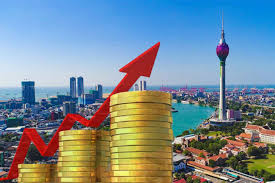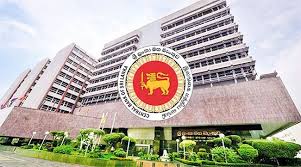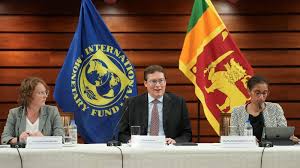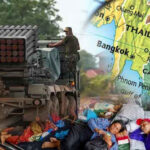
SL Economic Recovery Gains Ground Amid Fiscal Gains and Global Risks
- CNL Reporter
- July 26, 2025
- Weekly Economic Review
- SL Economic
- 0 Comments
Weekly Economic Review
Sri Lanka’s economy presented a complex picture this week, balancing cautious monetary policy with rising fiscal revenue, looming global trade risks, and critical tax reforms. While economic fundamentals show tentative signs of recovery, policymakers and analysts remain alert to external headwinds and the consequences of expanding the nation’s tax base.
CBSL Holds Rates Steady Amid Uncertainty

In its July review, the Central Bank of Sri Lanka (CBSL) maintained its benchmark interest rates, keeping the Standing Deposit Facility Rate (SDFR) and Standing Lending Facility Rate (SLFR) unchanged at 7.75%. The decision signaled confidence in the disinflationary trajectory and economic stabilization, despite challenges on the horizon.
CBSL Governor Dr. Nandalal Weerasinghe stated that while headline inflation remains within target, risks tied to global oil prices, interest rate shifts in major economies, and potential supply-side disruptions at home necessitate vigilance. The bank’s conservative stance aims to anchor inflation expectations, preserve monetary discipline, and support fiscal consolidation—a core condition of the ongoing IMF Extended Fund Facility (EFF) program.
The CBSL has been credited with providing exceptional monetary stability, even outperforming its 5% inflation target by applying deflationary policies akin to East Asian central banking strategies. This policy discipline is key as Sri Lanka enters sensitive negotiations on debt restructuring and prepares for the IMF’s next review.
Strong Revenue Growth Amid Spending Pressures

Government revenue climbed to Rs. 1,942.36 billion during the first five months of 2025—a 19.95% increase from the Rs. 1,619.23 billion collected in the same period last year, according to CBSL data. The spike is mainly attributed to a 20.87% surge in tax collections, rising to Rs. 1,802.48 billion from Rs. 1,491.25 billion a year earlier.
However, government expenditure and net lending (excluding repayments) also grew to Rs. 2,178.9 billion in the same period—up by Rs. 192.91 billion from 2024 figures—despite previous election pledges to curtail spending. This raises questions over the sustainability of fiscal consolidation efforts, especially as the country prepares its 2026 budget.
IMF Urges Fiscal Discipline and Reform Continuity

A visiting IMF mission, led by Evan Papageorgiou, stressed that the 2026 budget must align with agreed program parameters. The IMF expects Sri Lanka to maintain a primary surplus of 2.3% of GDP, achieved through robust revenue measures and disciplined spending.
Papageorgiou warned that external downside risks—especially the threat of higher U.S. tariffs on Sri Lankan exports, trade policy uncertainty, and rising geopolitical tensions—could undermine recovery efforts. He emphasized the need for continued reforms to rebuild fiscal space and external buffers.
Key IMF recommendations included ending long-term tax holidays—some of which extended up to 25 years—boosting tax compliance, broadening the tax base, and passing upcoming legislation on public-private partnerships, SOE reform, procurement, and asset management in line with the Public Financial Management Act.
The IMF also reinforced the importance of safeguarding CBSL independence, resisting monetary financing, and allowing exchange rate flexibility while continuing to build reserves.
VAT Expansion to Cover Global Digital Services

One of the week’s most significant policy shifts came with the Inland Revenue Department’s announcement that, starting October 1, non-resident digital service providers must register for and remit VAT under the amended VAT Act No. 04 of 2025. Companies such as Google, Meta, Netflix, and Adobe will be required to collect and pay 18% VAT on services provided to Sri Lankan consumers.
While the move is in line with global tax trends and aims to create a level playing field, local economists have voiced concern over the potential increase in service costs for consumers and businesses. Compliance and enforcement challenges are also anticipated, especially in monitoring foreign platforms.
Global Trade Frictions and Strategic Realignment

Sri Lanka’s trade outlook grew increasingly uncertain as second-round negotiations with the U.S. over restoring preferential market access under the Generalized System of Preferences (GSP) made little visible progress. Fears are rising over possible tariff hikes on key Sri Lankan exports like apparel and tea—both of which are critical to employment and export earnings.
Compounding this risk is the looming expiration of the EU’s GSP+ scheme, which could deal another blow to Sri Lanka’s export sector if not renewed.
In response, the government is seeking to diversify trade partnerships. Sri Lanka will participate as a Special Partner Country at the upcoming China–ASEAN Expo in September, an initiative aimed at deepening trade ties with Asia amid growing Western trade protectionism. Officials see this engagement as essential to cushioning the effects of any loss of Western market access.
Currency and Market Performance

The Sri Lankan rupee traded steadily in the range of Rs. 305–308 per U.S. dollar, underpinned by continued remittances, foreign inflows, and subdued import demand. However, importers remain cautious amid fuel price volatility and uncertainty surrounding debt repayments.
On the equities front, the Colombo Stock Exchange saw low investor activity. The All Share Price Index (ASPI) posted marginal losses as market participants adopted a wait-and-see approach amid tax reform announcements and ongoing global economic uncertainties.
Outlook: A Balancing Act Between Stability and Reform

Sri Lanka’s economic landscape reflects a cautious balance between domestic stabilization and exposure to external vulnerabilities. With inflation under control and revenue collection on the rise, the foundations of recovery are being laid. However, the government faces a critical test in ensuring fiscal discipline, maintaining public support, and navigating volatile global trade dynamics.
As the country heads into budget season, the path forward will require not only compliance with IMF mandates but also strategic policymaking to protect export competitiveness, manage public sentiment, and accelerate structural reforms.

